Year: 2018
Himalayan Hydro Expo 2019
Event Name: Himalayan Hydro Expo
Dates: January 18-20, 2019
Location: Kathmandu, Nepal
Venue: Bhrikutimandap
The Robbins Company is excited to announce that we will be exhibiting at the Himalayan Hydro Expo January 18 through 20 in Kathmandu, Nepal. Stop by our booth to discuss the Bheri Babai Diversion Multipurpose Project, one of Nepal’s 11 National Pride Projects, currently being bored by the country’s first tunnel boring machine.
STUVA 2019
Event Name: STUVA Expo and Conference
Dates: November 26-27, 2019
Location: Frankfurt, Germany
Venue: Messe Frankfurt
The Robbins Company will be exhibiting at the 2019 STUVA Expo and Conference being held in Frankfurt, Germany November 26 and 27. Stop by stand D126 to discuss current projects with a Robbins tunneling expert.
ICUEE 2019
Event Name: International Construction & Utility Equipment Exposition
Dates: October 1-3, 2019
Location: Louisville, Kentucky, USA
Venue: Kentucky Exposition Center
The Robbins Company is looking forward to seeing you in Kentucky, IL for the International Construction & Utility Equipment Exposition (ICUEE) between October 1 and 3. Visit booth 3065 to discover how renting or owning a Robbins Small Boring Unit (SBU) can save you time and money on your next boring project.
RETC 2019
Event Name: Rapid Excavation & Tunneling Conference
Dates: June 16-19, 2019
Location: Chicago, Illinois, USA
Venue: Hyatt Regency Chicago
Join us at the 2019 Rapid Excavation & Tunneling Conference (RETC) June 16 through 19 in Chicago, Illinois. Attend a presentation by a Robbins Tunneling professional or come talk to us at booth 306 to learn more about current techniques being used on tunneling projects throughout the world.
Presentations
Monday, June 17, 2019
8:55 am
Tunneling in Mixed Face Conditions: An Enduring Challenge for EPB TBM Excavation
Jim Clark, The Robbins Company, and Paul Verrall, Afcons Infrastructure Ltd.
Presented by Tyler Sandell, The Robbins Company
3:00 pm
Rebuilding TBMs: Are Used TBMs as Good as New?
Doug Harding, The Robbins Company
Tuesday, June 18, 2019
8:35 am
Breaking Through Tough Ground in the Himalayas: Nepal’s First TBM
Missy Isaman, The Robbins Company
Wednesday, June 19, 2019
8:35 am
7.93 m Open TBM Shotcrete System Improvement and Innovation at China’s Jilin Project
Desiree Willis, The Robbins Company and Ya Jun Guo, Robbins China
Presented by Brad Grothen, The Robbins Company
WTC 2019
Event Name: World Tunnel Congress
Dates: May 3-9, 2019
Location: Naples, Italy
Venue: Mostra d’Oltremare
The Robbins Company looks forward to attending the World Tunnel Congress (WTC) and ITA-AITES General Assembly in Naples, Italy. Visit stand 68 during exhibition hours May 3 through 9 to learn more about past project successes and exciting current tunneling endeavors.
Technical Presentation
Challenging Mixed Face Tunneling at India’s Sleemanabad Carrier Canal
by Jim Clark, Robbins
Time & Date: May 8, 12:20-12:40
Session: Long and Deep Tunnels
Location: Palacongressi, Europa Room
Posters
Location: Teatro Mediterraneo
Extreme Ingress: Managing High Water Inflows in Hard Rock TBM Tunneling
by Brad Grothen, Robbins & Danny Kough, Kiewit
Overcoming extreme tunneling conditions on Vietnam’s longest tunnel
by Sindre Log, Biyue Li & P.N. Madhan, Robbins
Rescuing and rebuilding TBMs in adverse ground conditions
by Detlef Jordan, Robbins & Barrie Willis, iPS
BAUMA 2019
Event Name: BAUMA
Dates: April 8-14, 2019
Location: Munich, Germany
Venue: Messe München
Meet us in Munich, where The Robbins Company will be exhibiting at BAUMA, the largest construction machinery trade show in the world. Join us at Hall C2, stand 403 between April 8 through 14 for presentations on current projects and cocktail hours, all being held within our booth.
Tuesday, April 9
5:30 pm – 6:30 pm CET
“Avoid Disasters in TBM Tunneling: Proven Strategies” presented by Robbins President Lok Home
Thursday, April 11
5:30 pm – 6:30 pm CET
“A Powerful Solution for Renewable Energy: Hydro Tunneling” presented by Cutters Product Manager Sindre Log
If you would like to join one or both of our events, email Sarah Brooks at brookss@robbinstbm.com to RSVP.
NASTT 2019
Event Name: NASTT No-Dig
Dates: March 17-21, 2019
Location: Rosemont, Illinois, USA
Venue: Donald E. Stephens Convention Center
The Robbins Company will be attending NASTT’s No-Dig Show March 17 through 21. Be sure to visit booth 921 to learn more about Robbins Small Boring Units (SBUs)—the most cost effective and time efficient way to bore through hard rock.
Namaste Nepal: How I Learned to Live with Less and Appreciate Tunnels More
In Nepal, the greeting ‘Namaste’, while pressing both palms together in front of the chest, signifies both ‘hello’ and ‘goodbye’. It implies a circular concept of time that I rather like—I certainly think I will be coming back to this country of high mountains, valley forests, and yes, tunnels.
The Adventure Begins
When I first learned that I would be visiting Nepal to see a swift-moving tunnel project making an impact in a local community, I was pretty jazzed. I also took it upon myself to overpack. The Bheri Babai Diversion Multipurpose Project (or BBDMP for short) is a 12 km long tunnel that travels below protected forest considered part of the Bardia National Wildlife Reserve. This is an area home to tigers, rhinos, Asian elephants, leopards, and more. And, most worryingly for me, mosquitoes.
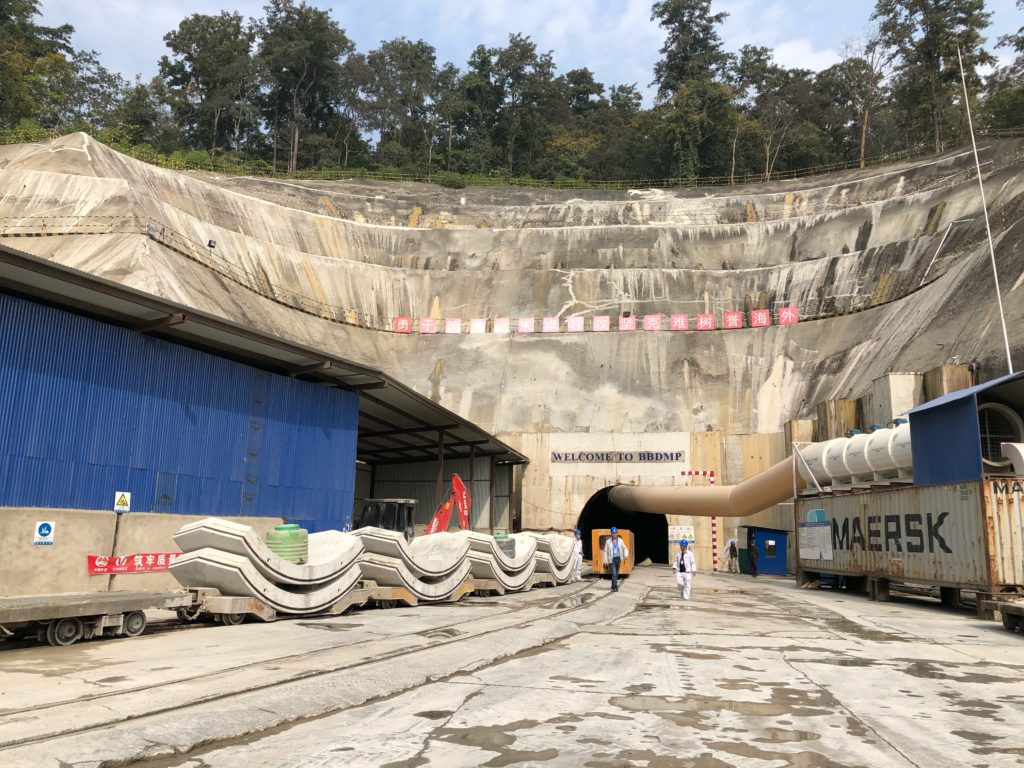
The BBDMP portal. Note the trees: perfect mosquito territory.
Mosquitoes love me. I’m not entirely sure why they love me so much, but let’s just say that if there’s a mosquito within a 2 km radius it will find me. Thus, I decided to be prudent and go all out when packing. I purchased a whole new set of safari clothes, the most potent bug spray I could find in copious amounts, and much, much more. I stuffed everything into two suitcases and set off on my journey.
A full 24 hours of traveling later (the journey from Seattle, USA to Kathmandu is no joke, folks), and I arrived in the Kathmandu airport…with no checked luggage. Through a gross miscalculation (what a way to learn a lesson!) I also had not packed hardly anything in my carry-on bag. I had no clothing with me, and more importantly, no bug spray. What was I to do?
Rolling with It
After discovering that my bags were several days away, I decided to forego any hope of reuniting with them during my trip. Instead, I rolled with it. After a one-hour local flight from Kathmandu to Nepalgunj, we arrived at our destination. Nepalgunj is a frenetic, dusty town located around 8 km from the Indian border and one hour from the BBDMP site. The culture is heavily influenced by India, and we had many meals of delicious spicy curry and fried bread. The streets were lined with small shops and marketplace stalls, but to my dismay, no department stores.
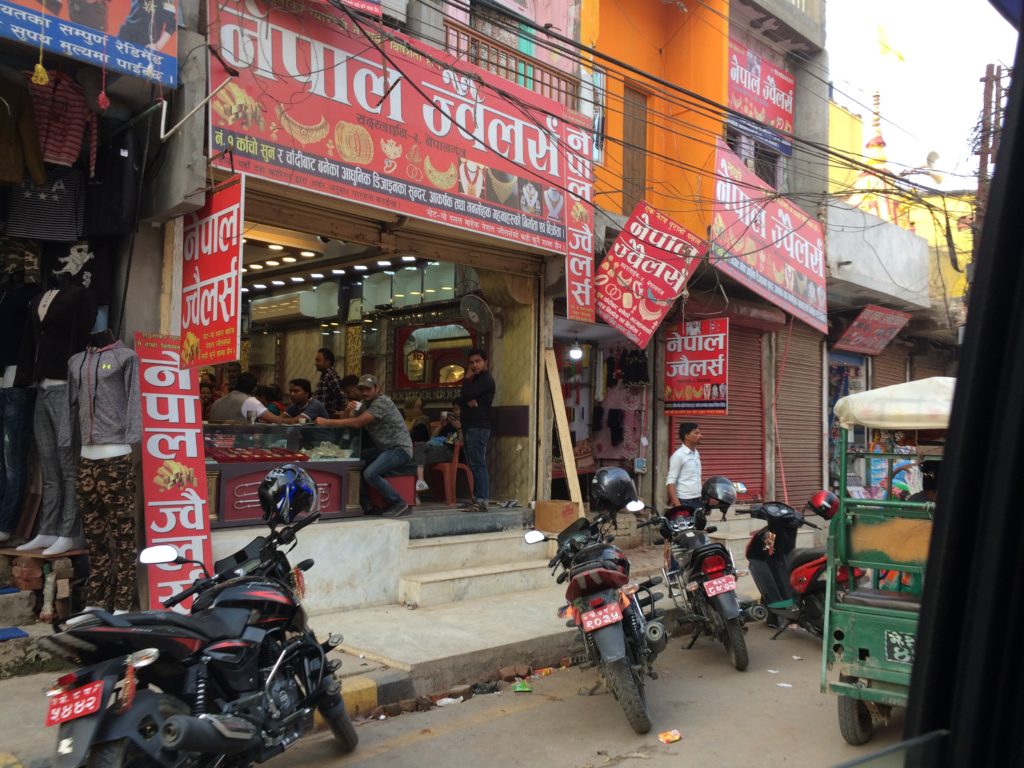
The crowded marketplace in Nepalgunj.
After a quick Google search my coworkers and our guests with us for the site visit headed to the nearest approximation, known as Rani Mart (Rani means ‘queen’ in Hindi). To my surprise, I purchased a whole new wardrobe and everything I needed for 1/10th of the price I would have paid for it in the U.S. (though the sizing on the tags was quite a bit larger!) I was feeling very pleased with myself.
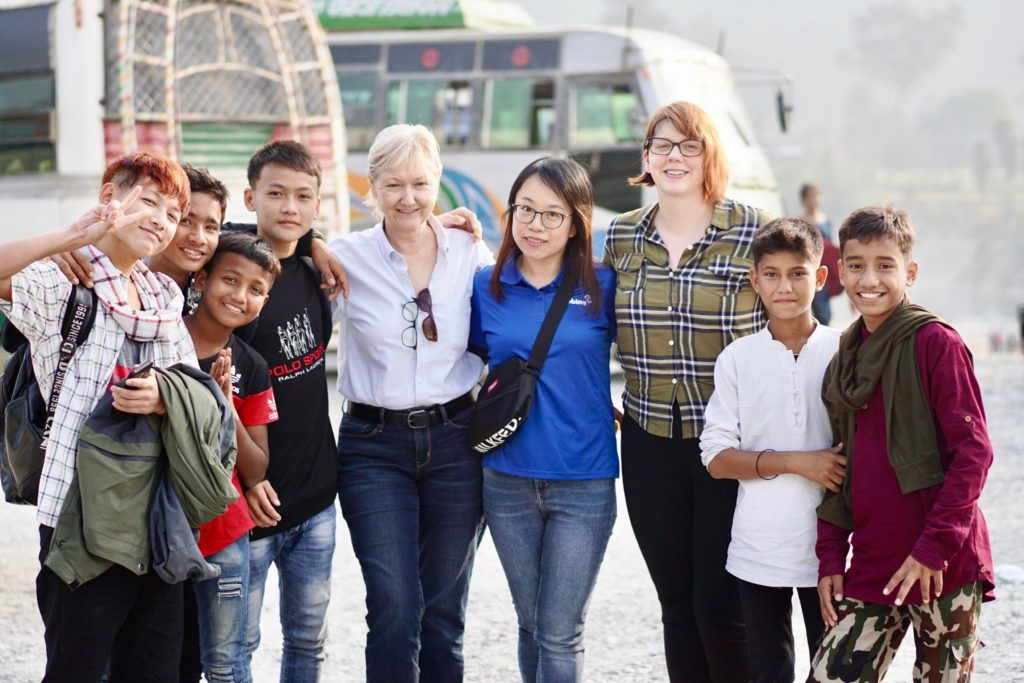
We took pictures with the local kids next to the BBDMP site. I’m the one rocking the green plaid shirt—the latest fashion from Rani Mart.
A Little Perspective
The next day we were ready to visit the jobsite. I couldn’t help but notice the rolling blackouts that plagued the city and the vast stretches of farmland requiring huge water resources. The people in the surrounding area make do with limited resources in ingenious ways—I was intrigued to see, for example, that every outlet requires you to flip an on-switch before the current becomes available. Perhaps we Americans could save significant energy if we made a setup like this a national standard. Local hotels, including one we stayed at, use solar panels for their power and air conditioning, and harvest rain water in order to reduce their usage.
All of this made me realize how much the BBDMP will impact the surrounding areas. This was confirmed in a meeting we had with Nepal’s Department of Irrigation (DOI), the project’s contractor China Overseas Engineering Group Co. Ltd. (COVEC), and consultant Geodata. The tunnel is sourcing water from the Bheri River to the Babai River, traveling through mountainous Himalayan geology known as the Siwalik Range. The water, as the project’s name suggests, is for multiple purposes. The estimated annual benefit in Nepalese Rupees is $2.9 billion for irrigation, and $4.3 billion for hydropower, making a total of $7.2 billion in benefits once the project becomes active.
The completed tunnel will irrigate 51,000 Ha of land and provide 48 MW annual generating capacity. That’s not to mention the environmental benefits: The Babai River currently swells each monsoon season and then runs extremely low in drier seasons. It is connected directly to the groundwater table, which is being aggressively depleted. With a regulated flow during all seasons, the groundwater table will see less depletion year-round.
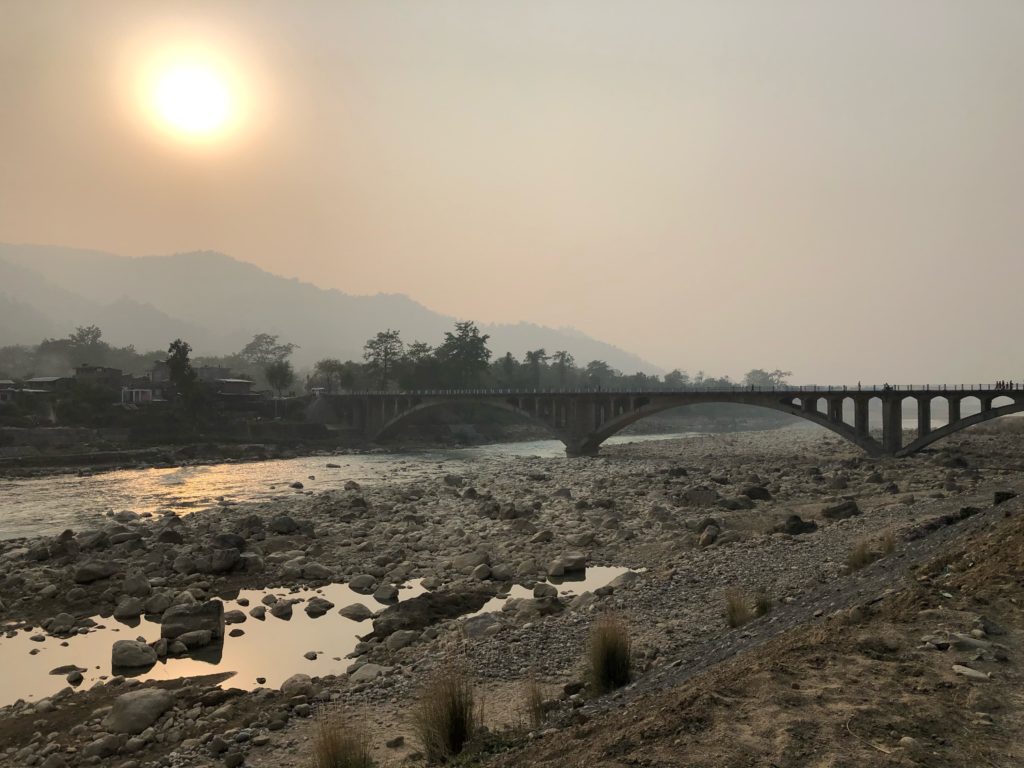
We crossed the Babai River on the way to the jobsite, seen here at low water levels.
The impact, in other words, is huge. Learning all of this made my obsession with my missing luggage seem inconsequential in comparison. I had my bug spray and some clothes. That was all I needed.
The First Nepalese TBM
With such a landmark project for the region, its proponents were willing to look to the latest technology during the planning phase. Our local representatives, MOSH Tunnelling, had been working since the 1990’s to bring a TBM to Nepal, a country known for its Drill & Blast tunneling. While TBMs had been considered multiple times, each time conventional tunneling had been chosen.
When the BBDMP was fast-tracked as one of the country’s “National Pride Projects” feasibility studies showed that Drill & Blast excavation could take as long as 12 years. The DOI needed a faster option, and they found it in TBMs. They began working with MOSH Tunnelling and Robbins to bring what would be the first Nepalese TBM ever into the country—a 5.06 m diameter Robbins Double Shield. The process for the DOI to acquire funding for the project and select a contractor through international competitive bidding took seven years, spanning from 2007 to 2015, when project commencement officially began.
Fast forward to our site visit in November 2018 and the project is far exceeding expectations. Tunneling has topped out at 1,202 m in one month with an average of around 740 m per month. The knowledgeable COVEC team have traversed a major fault zone, the Bheri Thrust, with no problems, and overcome a stuck TBM shield with a bypass tunnel constructed in just five days. Overall, the TBM is far ahead of schedule and the results are of national importance.
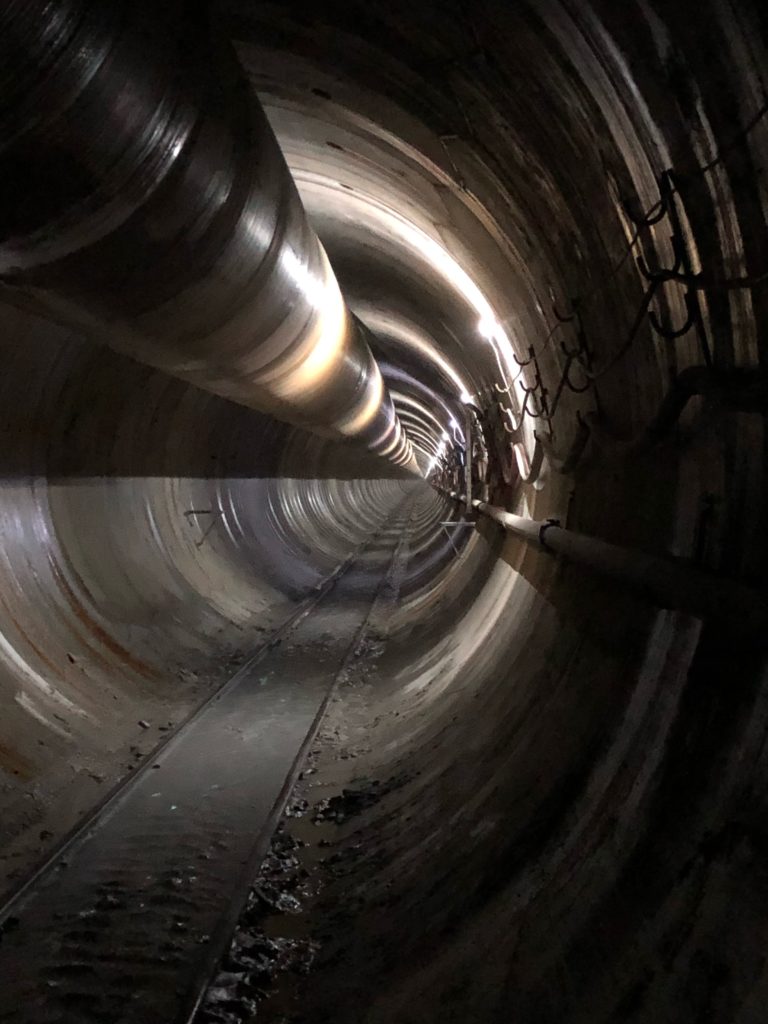
The tunnel is lined with hexagonal segments for rapid excavation.
The local community, national media, and government are all watching how the TBM excavation plays out at BBDMP. Given the strong performance, they are now considering TBMs for a host of future multipurpose water projects. It’s the kind of result that opens up a whole new marketplace.
Into the Forest
After a great site visit, we chose to relax for one day at a spectacular local lodge that offered jeep safaris into the Bardia Wildlife Reserve. Currently home to nearly 90 tigers (a number that is rapidly increasing through conservation efforts) we were hopeful of perhaps seeing one of the striped cats in the forest. Our guide was knowledgeable, our jeep sturdy and our driver adept as we traversed bumpy roads and forded a few streams on our safari drive. We saw mischievous macaques, tree-dwelling langurs, a host of brightly colored birds, and various deer. We saw several enticing tiger prints…but the tiger itself remained elusive. Obviously, this means that I must go back!
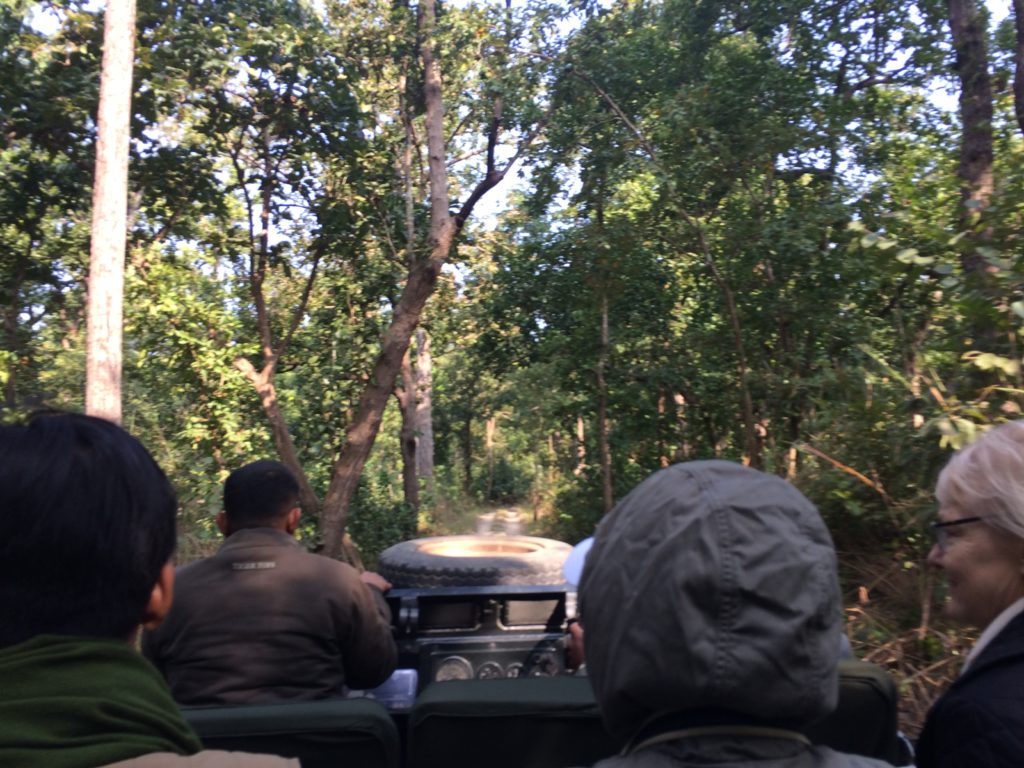
Over the river and through the woods…
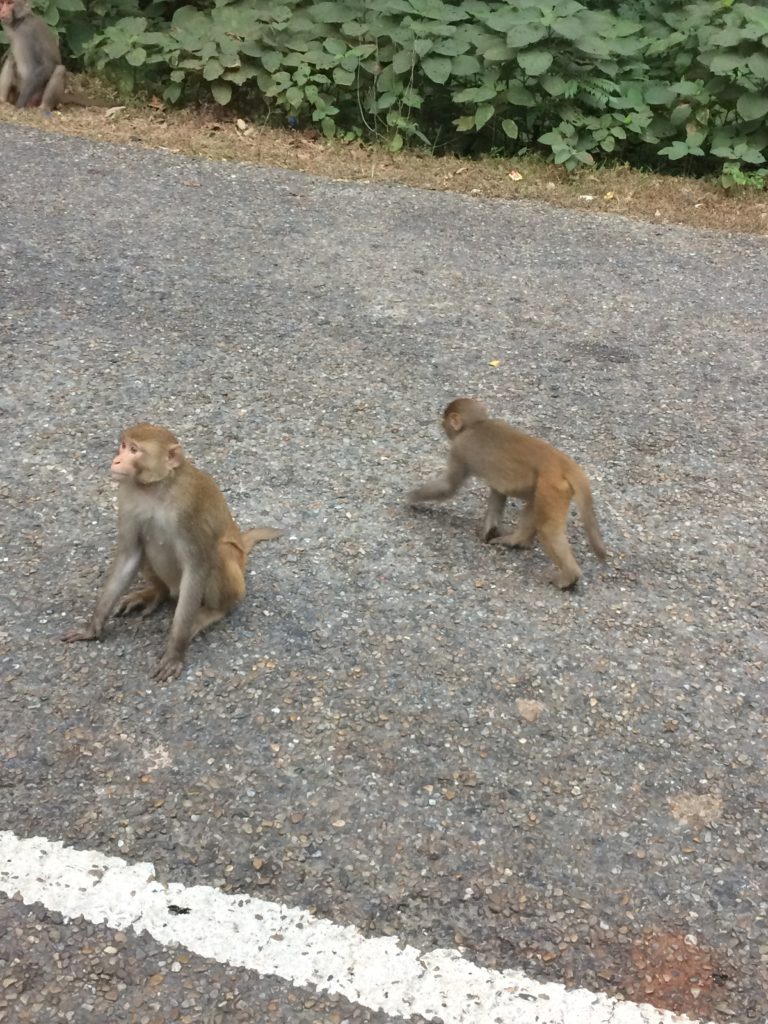
…past mischievous macaques waiting for food from tourists…
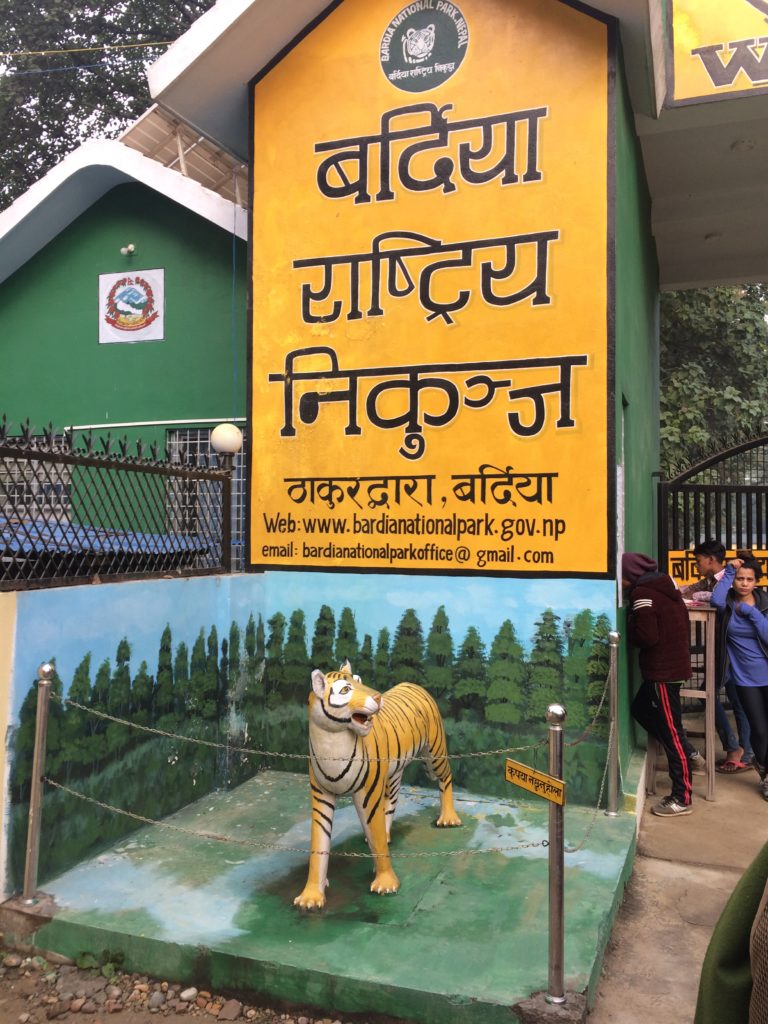
…we spotted our one and only tiger for the day.
A Lesson Learned
After traversing a tunnel, traipsing through the forest, and some swift sight-seeing in Kathmandu on our last day, I felt I had come full circle. I was ready to head home, but with an eye towards future opportunities to return to Nepal, whether for business or vacation. I will be back. But next time, you can rest assured, I will only bring what I can fit in my carry-on.
Tough TBM and Team Overcome the Odds with Atlanta Breakthrough
On October 4, 2018, onlookers watched as a 3.8 m (12.5 ft) diameter Robbins Main Beam TBM completed its epic journey. The TBM, christened “Driller Mike”, after local rapper and activist “Killer Mike”, overcame extremely hard rock conditions along a curving 8.0 km (5.0 mi) tunnel to bolster the city of Atlanta, Georgia, USA’s water supply.
The new tunnel brings the Atlanta Water Supply Program one step closer to increasing the city’s water capacity to between 30 and 90 days depending on daily usage. “Our schedule for the project was very aggressive but the project team stayed together to overcome issues related to the mining of the tunnel,” said Bob Huie, Project Director for the PC Russell JV, the Construction Manager at Risk (CMAR) for the project.
The unique structure of the project team is credited with the overall project success despite challenges. “I’m proud of our team. They had obstacles and challenges and challenging ground, but they stuck together and didn’t give up, and they were successful. There was great leadership and supervision all around,” said Larry Weslowski, Tunnel Superintendent for the PC Russell JV.
The project is only the third such large construction project in the U.S. to use the CMAR structure. The PC Construction/HJ Russell JV was selected as the CMAR for the project, who then purchased the Robbins Main Beam TBM for the tunnel. The designer for the construction works including tunnel and shafts, JP2—consisting of Stantec, PRAD Group, Inc., and River 2 Tap—specified the hard rock TBM. Operation and assembly of the TBM was then sub-contracted to the Atkinson/Technique JV.
The robust TBM was assembled using Onsite First Time Assembly (OFTA) at the massive Bellwood Quarry site with help from Robbins personnel. “The guys built everything per the specs to help with scheduling. It was a challenge but there was no negativity during the process,” said Weslowski. Despite summer temperatures hitting 43 degrees Celsius (110 degrees Fahrenheit) and 100 percent humidity, the TBM was ready to launch by October 2016.
Hard granitic rock challenged the 19-inch disc cutters from the outset. “There was ground so hard that it would take eight hours to go 1.5 m (5 ft). It was between 117 and 310 MPa (17,000 and 45,000 psi) UCS. The beginning of the job was tough,” said Weslowski, but he added that once the learning curve had been overcome “they started breaking project records left and right towards the end. We got a best day of 38.4 m (126 ft). Rates just kept increasing.”Other challenges included groundwater encountered during tunneling. “We did encounter groundwater contamination that required remediation. This remediation work was completed successfully,” said Huie.
With tunneling complete, the USD $300 million project for the City of Atlanta’s Department of Watershed Management is on track to meet its scheduled overall completion date of September 2019. The project will turn the inactive Bellwood quarry into a 9.1 billion liter (2.4 billion gallon) raw water storage facility connecting with the Chattahoochee River and various water treatment facilities.
Overcoming Fault Zones and Water Inflows: Thuong Kon Tum Hydro Project
In this short clip, Robbins Field Service personnel discuss how they handled boring through hard rock, fault zones, and water inflows at the Thuong Kon Tum Hydro Project in Kon Tum Province, Vietnam.
- Overcoming Mountainous Geology at Nepal's Sunkoshi Marin Project
- Unprecedented Diameter Change: The Mill Creek Tunnel
- Mine Development Machine: Successful Rectangular Rock Bore in Fresnillo, Mexico
- Encountering Caverns in France: TBM Tunneling in Karst Conditions
- 48 Fault Zones and 26 Bar Pressure: Boring Turkey's Gerede Water Transmission Tunnel

 Close
Close  Menu
Menu 